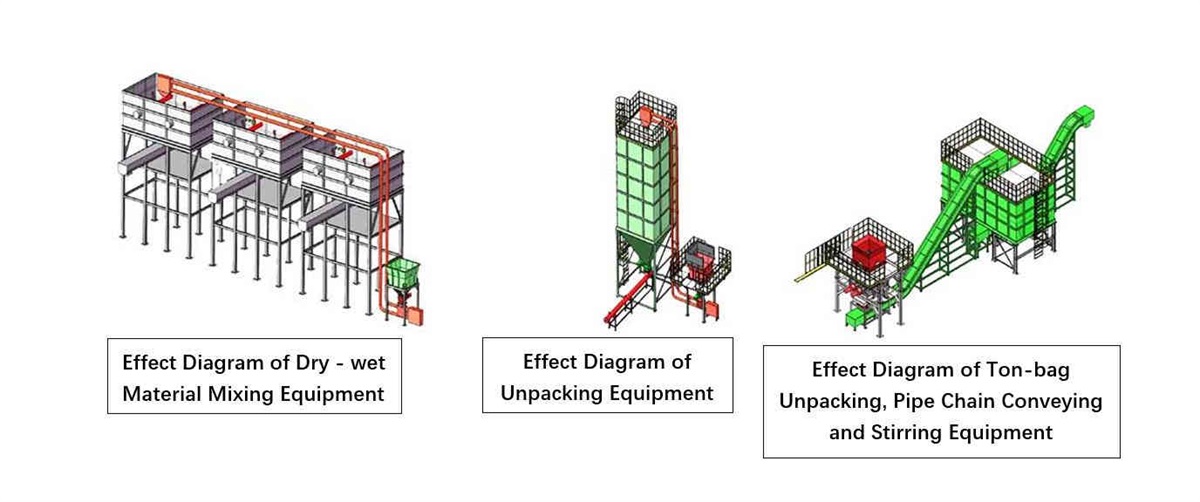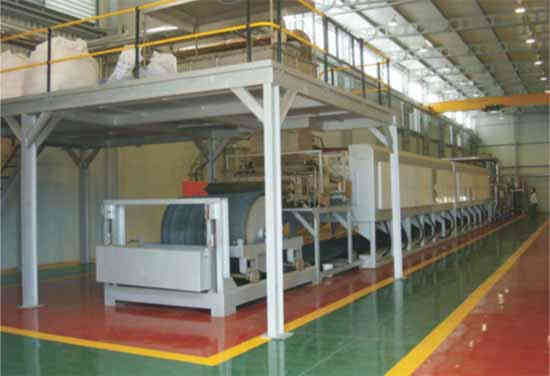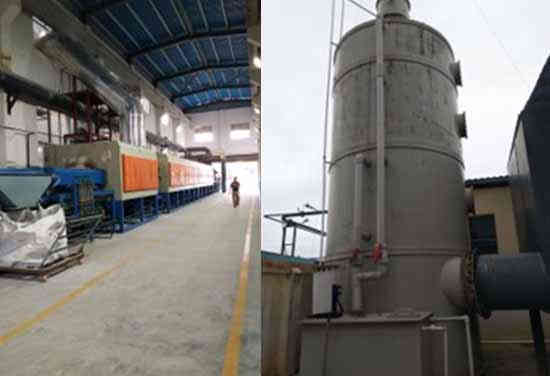
 CN
CN

 CN
CN

Solid/hazardous waste treatment solution provider
Resource recycling system equipment integrator
Batching process scheme - main equipment of intelligent batching

Technical ideas for comprehensive recovery and safe disposal of smelting hazardous wastes
For arsenic rich hazardous wastes, our technical idea is: the hazardous wastes are separated by re oxygen enriched side blowing electric furnace, the crude lead produced by the side blowing furnace is electrolytic refined, and the electrolytic anode mud is smelted to produce precious metal products; If the zinc content of the slag produced by the side blowing furnace is low, it shall be sold to the cement plant or disposed of as general solid waste. If the zinc content is high, it shall be blown in the fuming furnace. The flue gas of side blowing furnace is collected at high temperature through waste heat boiler and electric dust collection to produce lead containing indium germanium dust for small metal smelting; The flue gas after electric dust collection is collected by quenching to produce crude arsenic oxide, which is then purified, and the produced pure arsenic oxide is sold out. If the pure arsenic oxide Market is not good, the pure arsenic oxide will be reduced to metal arsenic for sale or rigid landfill. Finally, valuable metals such as lead, copper, silver and indium are fully recovered, and arsenic is opened in the form of arsenic trioxide or metal arsenic.
Batching process scheme - Intelligent batching
Smelting hazardous wastes contain complex components, arsenic and heavy metals, and some materials raise dust, which is very harmful to human body. According to the characteristics of arsenic containing hazardous wastes, Hunan Ruiyi has put forward the concept of "intelligent batching" in China. Using equipment such as pipe chain conveyor and vertical warehouse, it realizes intelligent transportation and intelligent batching from material mobilization to process links, so as to avoid material contact with human body and material landing to a greater extent, so as to achieve no dust in the site, environmental friendliness and full intelligent operation. The process scheme is planned to be adopted in the 50000 T / a comprehensive recovery and safe disposal project of valuable metals of Yunnan Ruiyi Environmental Technology Co., Ltd.
Smelting process scheme - re oxygen enriched side blowing electric furnace

The main features of this flue gas treatment process are:
1. Heavy metals are concentrated in high-temperature smoke and dust, which is collected by waste heat boiler and electric dust collector, and the collected high heavy metal smoke and dust is used to recover small metals;
2. Arsenic is enriched in low-temperature smoke and dust. The low-temperature smoke and dust is collected by the bag dust collector behind the quench tower. The collected low-temperature smoke and dust is used to purify arsenic trioxide and prepare metal arsenic.
3. Through the ionic liquid absorption system, the concentration of sulfur dioxide in flue gas is stabilized at 4% ~ 4.5%, so that it has the conditions for acid making. The tail gas of acid making can be desulfurized through the ionic liquid absorption system, so as to achieve "near zero emission" of sulfur dioxide.
Arsenic oxide purification process scheme

Arsenic trioxide is collected in the bag dust collector behind the quench tower. At this time, its purity is about 20%. The main purpose of purification is to enrich about 20% of arsenic trioxide to more than 90%.
The equipment we use is steel belt furnace, which is mainly characterized by:
(1) The whole equipment is sealed without dust and has strong environmental protection;
(2) The thickness of low temperature, oxygen free and thin material layer is designed to ensure that only arsenic trioxide volatilizes and other impurities do not volatilize;
(3) Long reaction time makes arsenic trioxide volatilize in sufficient time;
(4) Good degree of automation, no workers on duty, full computer operation;
(5) Automatic slag discharge without workers' operation.
Arsenic oxide purification process scheme
